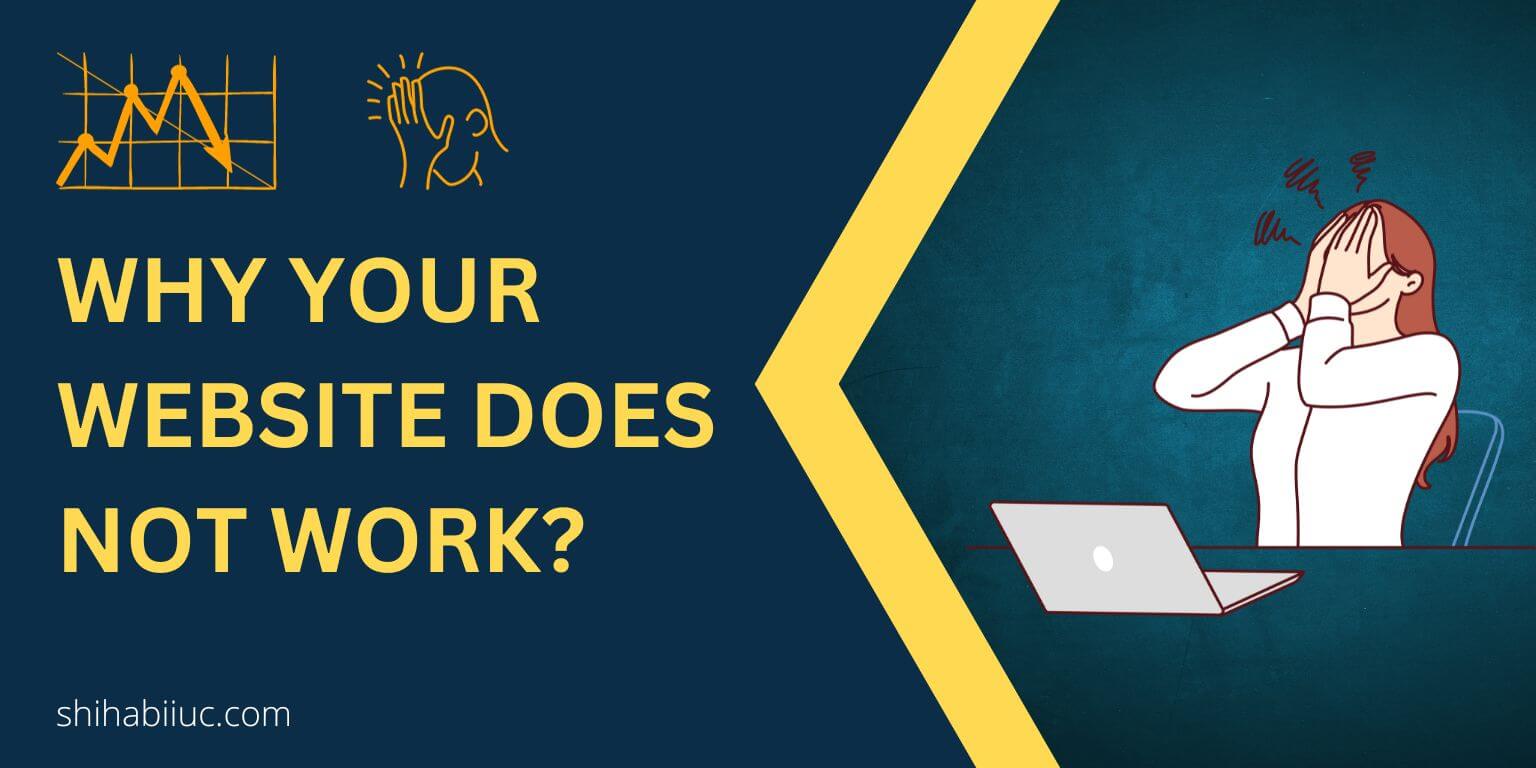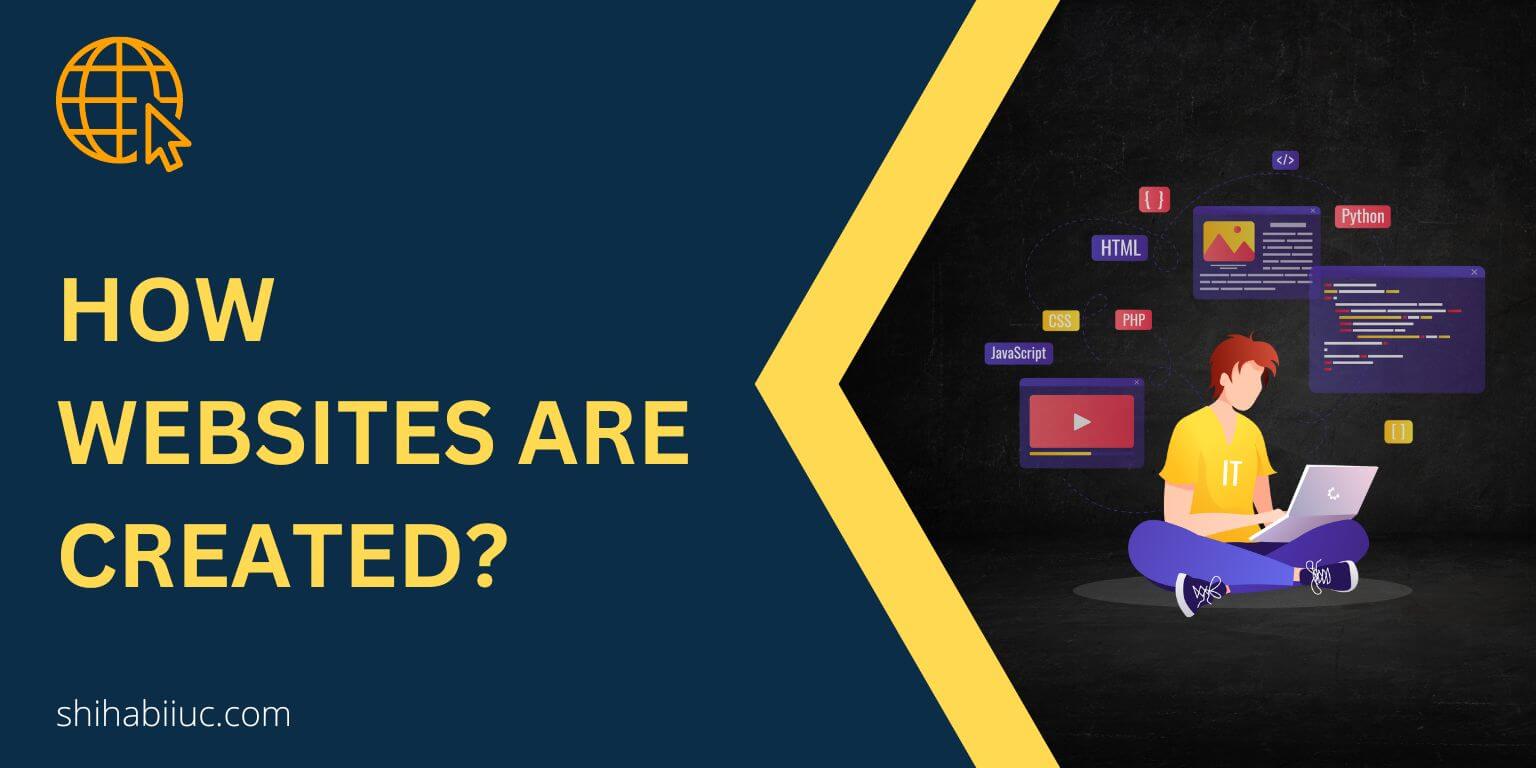
No matter what back-end programming language you use, the final output to the end users (web browsers) is plain HTML, CSS & JavaScript. From this perspective, you can assume that websites are created with HTML, CSS & JavaScript.
A website can be created in many different ways. In this post, I will explain how websites are mainly created. After reading this post, you will have a clear idea about the following:
- Popular & different ways to build a website.
- Cost of a website.
- Why it’s becoming popular day by day.
Let’s get started.
The most common ways to create websites
In this digital world, websites are created in 3 main ways. Below I will discuss them briefly and give you a clear idea of them.
Using a CMS (Content management system)
This is the by far most used and popular way to build websites nowadays. There are different CMSs out there such as WordPress, Drupal, Joomla, MODX, etc.
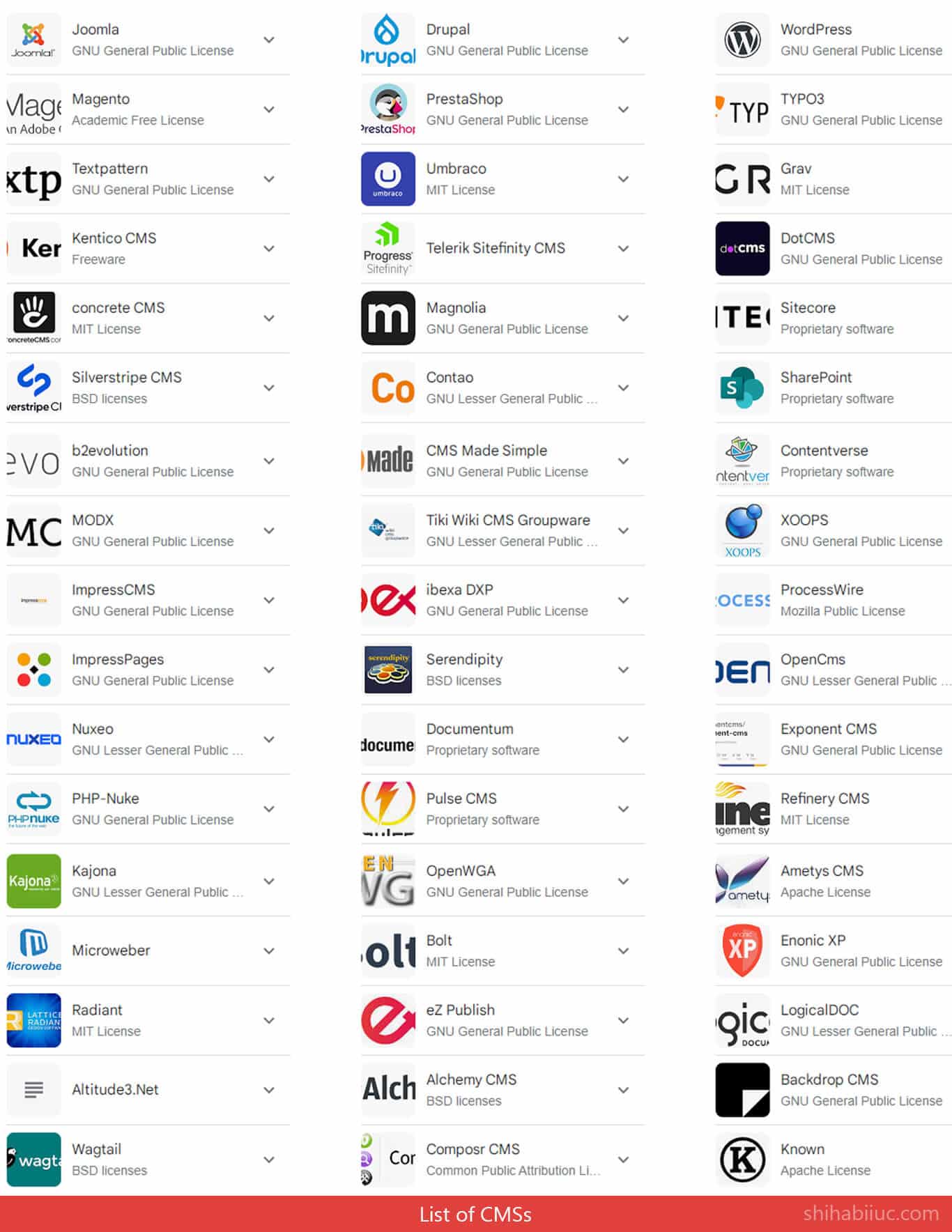
There are over 50 CMS or content management and WordPress is one of the most used and popular. More than 42% of websites are built with WordPress.
It has two different types of environments. Such as self-hosted and WordPress.com. You can learn more about their difference and details in this post. However, self-hosted WordPress is easier to manage compared to the other one.
There are other CMSs out there. They have uniqueness, different types of flexibility & reasons for using them.
In a nutshell, CMS is software that helps you to manage your content. It also allows you to connect with a database and you don’t need manual action to do it.
Most people use a CMS or content management system to build their website. It is the most used, popular & flexible to build websites.
Utilizing a website builder platform
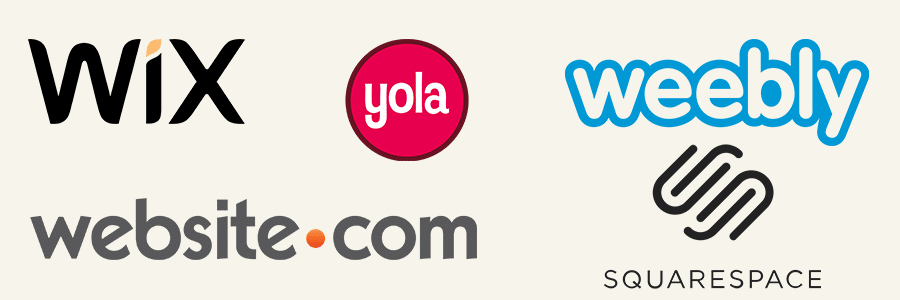
This is the second most popular way to build websites. Website builders are third-party platforms to build websites using their drag & drop widgets.
There are numerous website builders such as Wix, Weebly, Squarespace, Webflow, etc.
You don’t need to write any code to build your website using any of these platforms. Also, you don’t even need to purchase a hosting. Except for the domain, you will get everything in one place. Some of these allow you to register domains on their platform.
These kinds of website builders are very popular with non-techies, especially for their drag-and-drop interface. Anyone can build a good-looking website using their premade templates.
Back in the old days, I had been working on Upwork and helped many clients with this type of website builder platform, especially Wix.
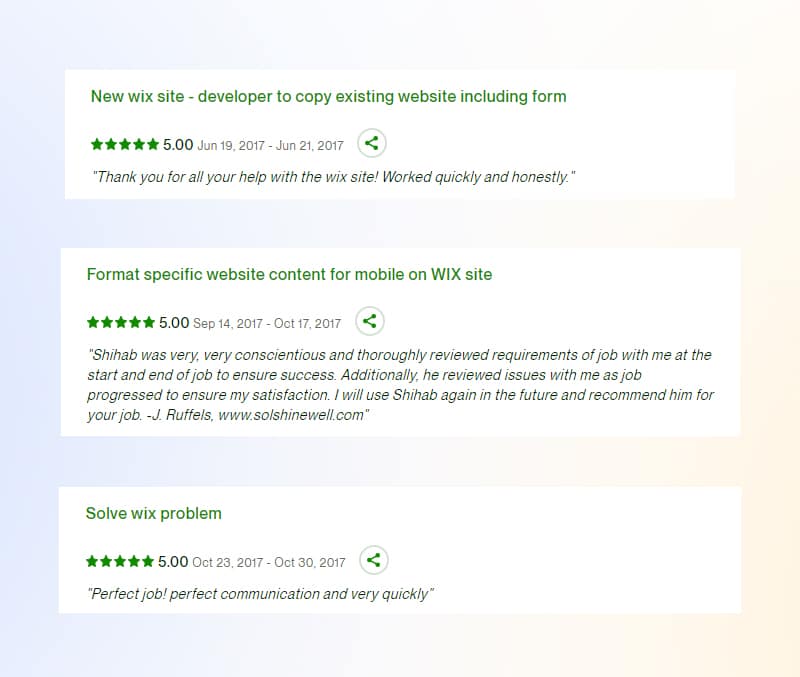
This is just not about Wix. Most of these website builders are very popular and trending ways to build websites these days.
Not to mention, you can also use & implement this kind of drag-and-drop interface in WordPress. Elementor, Divi, Beaver Builder, Visual Composer, Brizy, Oxygen Builder, BeBuilder(Muffin), etc. are some of the examples. You can learn more about them in this post.
Writing code & connecting with the database

This is another way to build a website and gradually people are becoming interested in this method.
It’s not so easy compared to the other ways. But it’s worth it.
In this method, people are hiring web developers & programmers who write code for building websites. If this is you who needs help, you can check this list of software & web development agencies.
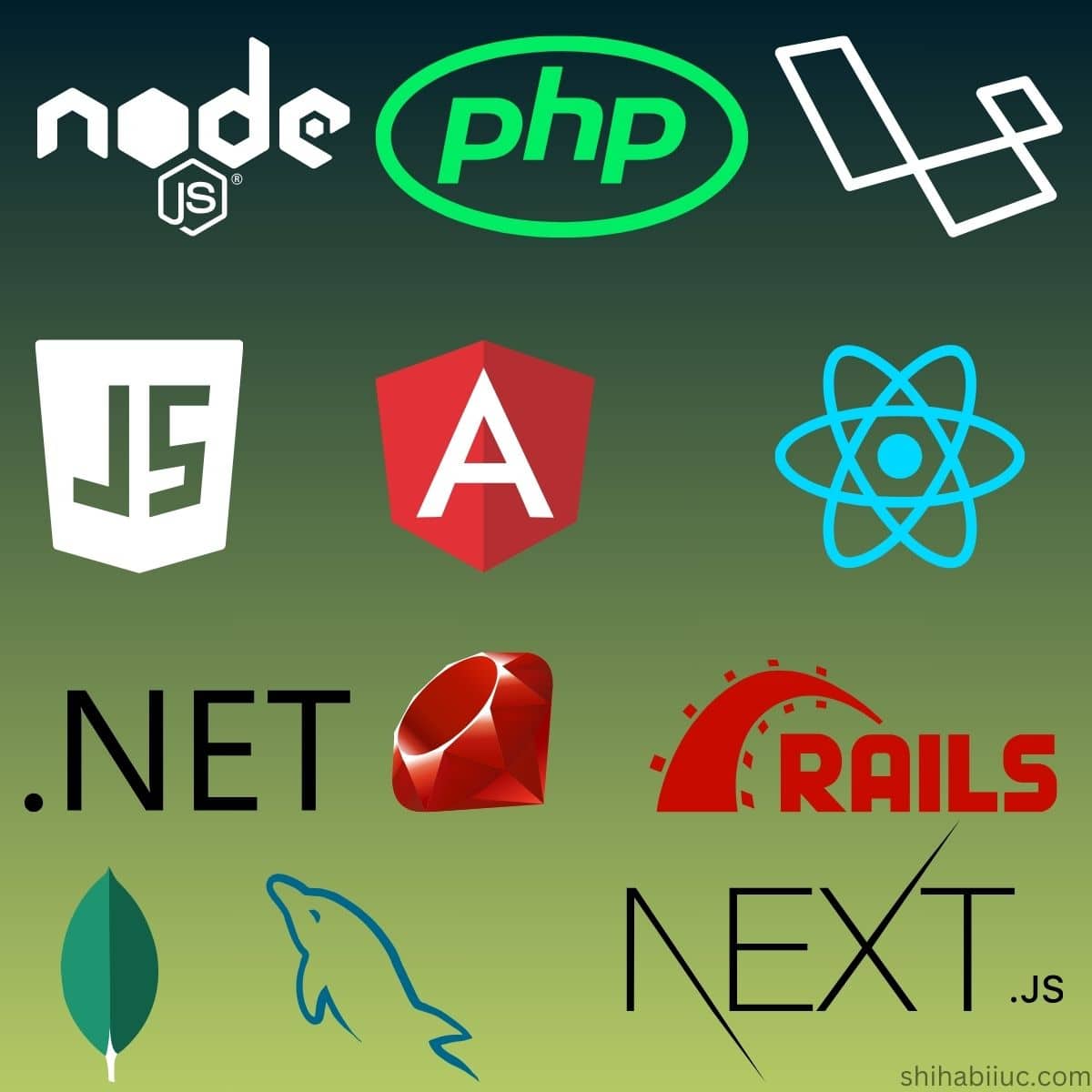
Like the CMSs & website builders, there are many different programming languages, frameworks, and libraries. For example, Node.JS, JavaScript, PHP, Laravel, etc.
You also need to connect with a database while using this approach. For example, MongoDB for Node, MySQL for PHP, etc.
So you definitely need a developer-level skill in order to build a website using this method.
But don’t get discouraged if you want to do it yourself. If you’re passionate about learning code, you can start from the very basics. For example, HTML & CSS. You can build a static website using only these two. You don’t even need to use a database in order to build a static website.
If you need help, I have created many projects that you can practice and learn for free. Also, you can learn CSS from the very basic to the advanced level in this post. After you learn these two very well, you can go further down the road and pick your desired back-end language.
Programming languages are twofold. Front-end & back-end. Code that interacts with databases is known as back-end languages e.g. Node, PHP, Laravel, etc. Code that doesn’t interact with DB and only works with web browsers is known as front-end language e.g. JavaScript, EJS, etc.
You may think of HTML & CSS as the front-end programming language. These two work with the front-end however, these two are not programming languages. HTML is a markup language and CSS is a stylesheet language.
Now that you know how websites are created. I explained the top 3 most common & popular ways to build websites in this digital world. Now let’s discuss some other topics related to building websites.
Here you’ll know the related information about creating a website. Such as cost, the best way to create a website, and necessary components such as domain, hosting, etc.
What do you need to create a website?

You need a domain & hosting to create a website. If you use a website builder platform like Wix, Squarespace, etc., then you don’t need to buy hosting.
If you need advice finding a good domain name, you can check this post. And if you’re on a tight budget, you can start developing your website on cheap hosting (less than $3 per month). After you start to receive 2K+ traffic (monthly), you can migrate your website to a different hosting. See how you can migrate a WordPress website.
Cost of a website

A website may cost you from $50 to $500 yearly. It depends on various things such as hosting, complexity, content creation, etc.
A domain generally costs $10 for the first year and then $18/20 for the next years.
Hosting companies and their packages may seem confusing especially if you don’t have any prior experience dealing with them. Hosting price starts from $19 to $300 & up (yearly). You can compare the prices in this post.
Then you have to add up to the cost of building the site. This cost will vary depending on the expertise, availability, and even location of the developer. Developing a 4-page website may cost you from $100 to $300. Again, it depends on the complexity and other factors. You can take a more detailed idea from this post.
Why websites are becoming important parts of any business?

A website is the core of someone’s marketing activities and a source of information. It’s available 24/7 and anyone can visit the website on his/her own schedule. The owner of the website does not necessarily need to be awake for 24 hours in order to communicate with other people.
Having a website is spreading your business information worldwide and getting to know your target audience. People can easily find your business information, communicate, make purchases, and so on and so forth.
These are the main reasons for becoming an important part of any business. Nowadays, you can’t imagine a business without having a website even if it’s a local business.
However, there are still many businesses out there that don’t have any website yet. But I think they will think of its necessity & benefits in the near future.
Conclusion
Websites are generally created in three main ways that I explained in this post. Building a website using CMS is one of them and it’s mostly used method. There are over 50 CMSs out there and WordPress is one of them. More than 42% of websites are built with WordPress around the globe.
Website builders like Wix, Weebly, Squarespace, etc. are another way to build websites. It’s very popular for those who don’t have so much technical experience. But these platforms have many limitations especially when you need to build complex functionality.
Building a website by writing code is one of the elegant, costly & effective ways to build a website. Programming languages, frameworks & libraries give you the flexibility to build anything you want especially when it comes to developing a feature that is very specific to your business.
Even though WordPress is a CMS (content management system), it gives you the flexibility to choose the route you want to go to. For example, you can use it to build a website using drag & drop page builders. It also gives you the ability to build a website by writing code. And that is why most websites are created using it.

